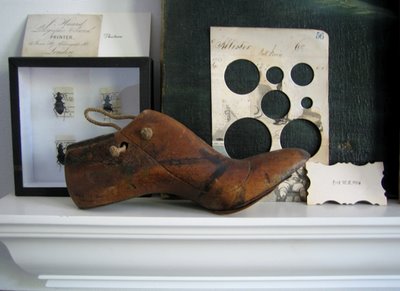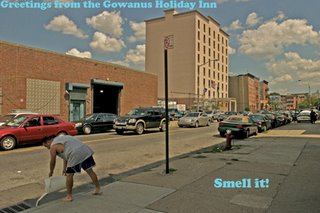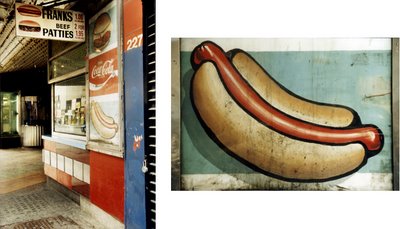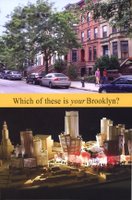 Although it hasn't stopped me from planning a trip in February, I've been preoccupied with what I call, somewhat loosely, the end of the world. I find myself scanning news headlines obsessively, salting away tidbits and references in my mental eschatological clipping file: environmental catastrophes, genetically modified foods, religious extremism, obesity, technological singularity (that's a new one for me and, boy, its a doozy), heck, throw in zebo, and the decline of civility. From the absurd to the epic, it's all become a kind of drone that I'm always tuning in to. Perhaps that's why I found Niall Ferguson's piece in Vanity Fair, arguing that the decline of the West is not imminent-- its here, perversely gratifying. It won't win many (other) liberal hearts and minds, making sloppy shorthand of it all in equating NASCAR, illegal immigration, and, yes even tattoos, with signs of The End:
Although it hasn't stopped me from planning a trip in February, I've been preoccupied with what I call, somewhat loosely, the end of the world. I find myself scanning news headlines obsessively, salting away tidbits and references in my mental eschatological clipping file: environmental catastrophes, genetically modified foods, religious extremism, obesity, technological singularity (that's a new one for me and, boy, its a doozy), heck, throw in zebo, and the decline of civility. From the absurd to the epic, it's all become a kind of drone that I'm always tuning in to. Perhaps that's why I found Niall Ferguson's piece in Vanity Fair, arguing that the decline of the West is not imminent-- its here, perversely gratifying. It won't win many (other) liberal hearts and minds, making sloppy shorthand of it all in equating NASCAR, illegal immigration, and, yes even tattoos, with signs of The End:Shame has gone; so has civility. On Friday and Saturday nights, most English city centers become no-go zones where drunken, knife-wielding youths brawl with one another and the police. Another striking symptom of this new primitivism is the extraordinary surge in the popularity of tattoos, once associated with the unruly Picts of the Far North. In this modern decline and fall, it seems, at least some of the barbarians come from within the empire.But I don't do him justice by merely quoting that, there's much more reasoned content. Somehow I found his cross-referenced kitchen sinkism compelling.
And what about the byzantine and loony mental machinations of Daniel Pinchbeck? I've got a reserve on The Return of Quetzalcoatl at the library! From a piece in LA Weekly:
In 2012: The Return of Quetzalcoatl, his part memoir, part anthropological journey through many things spiritual, metaphysical and just plain eerie, Pinchbeck illuminates not the world’s end but the many ways in which our social structures are disintegrating. “What I’m trying to show is that we’re already in a process of accelerated transformation,” he told me. “And I find that a reason to be hopeful.”More salient is this comment (from a recent Rolling Stone hatchet job)
"We have to fix this situation right fucking now, or there's going to be nuclear wars and mass death, and it's not going to be very interesting. There's not going to be a United States in five years, OK?"I think I'm with him on that...
A few months ago I saw a BBC documentary about Isaac Newton, 'outing' him as a religious obsessive, apocalyptic thinker and alchemist. He is said to have calculated AD 2060 as the time when there would be
a dramatic transition to a millennium of peace. In other words: the end of the secular world and the beginning of the Kingdom of God.2012? 2045? 2060? Whichever date you choose to give credence to, something seems to be coming soonish.
---
Kurt Anderson made an excellent observation in his End Days trend piece in New York magazine
I don’t think our mood is only a consequence of 9/11 (and the grim Middle East), or climate-change science, or Christians’ displaced fear of science and social change. It’s also a function of the baby-boomers’ becoming elderly. For half a century, they have dominated the culture, and now...I think their generational solipsism unconsciously extrapolates approaching personal doom: When I go, everything goes with me, my end will be the end.The "Me Generation" indeed.
* "Why don't you get back into bed
Why don't you get back into bed
Why don't you get back into bed...
Reasons to be cheerful part 3"
(image from: Morse Library, Beloit College)




























